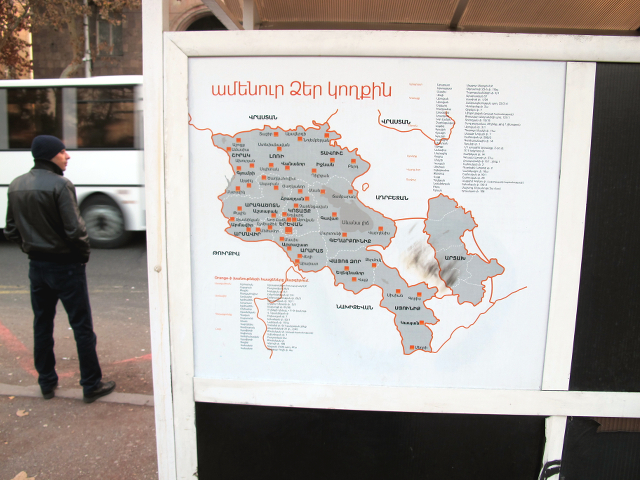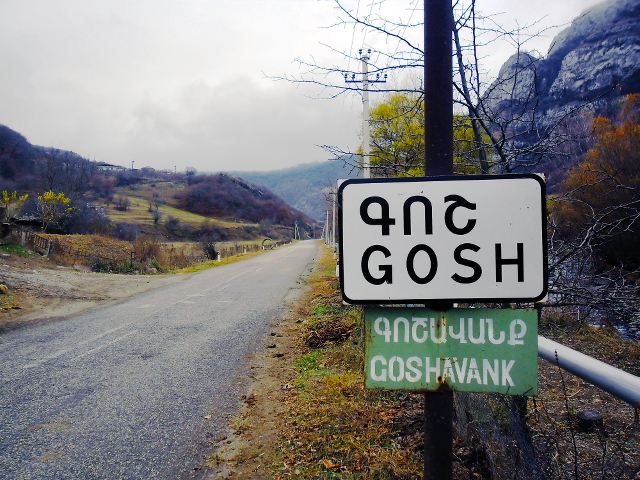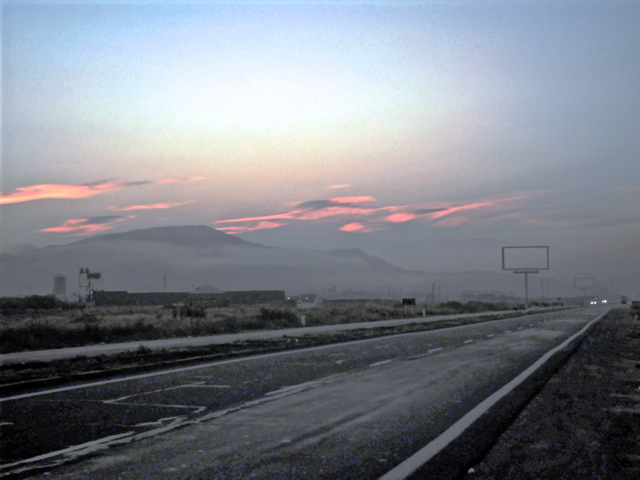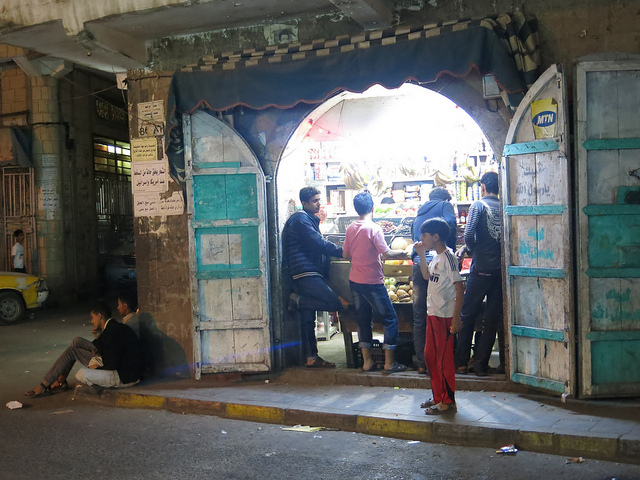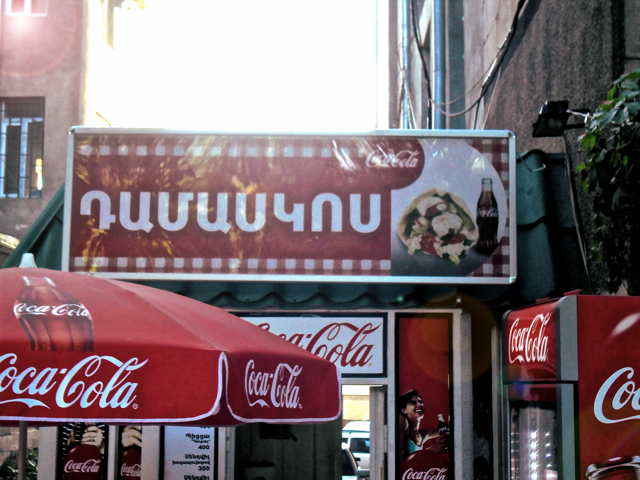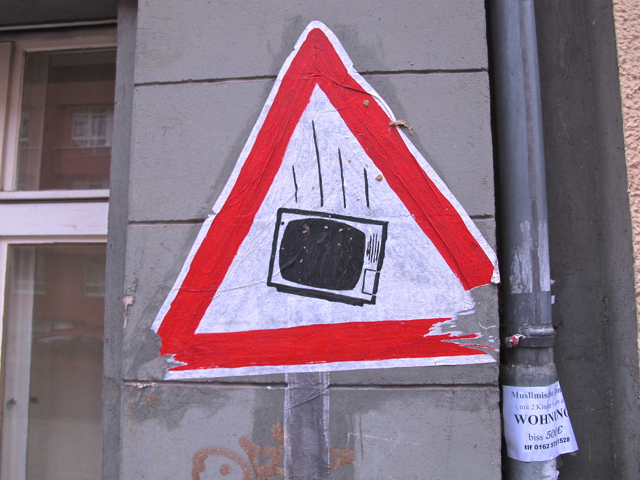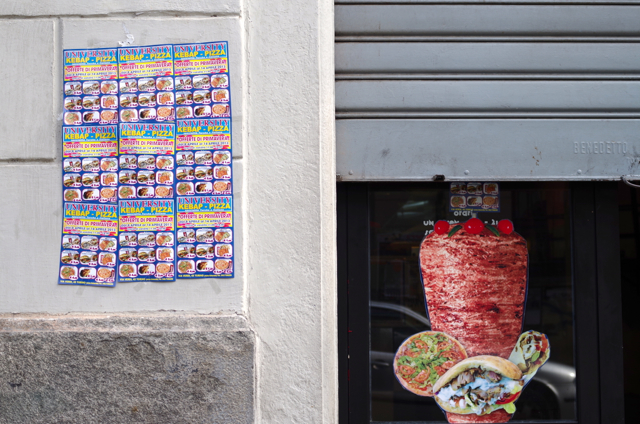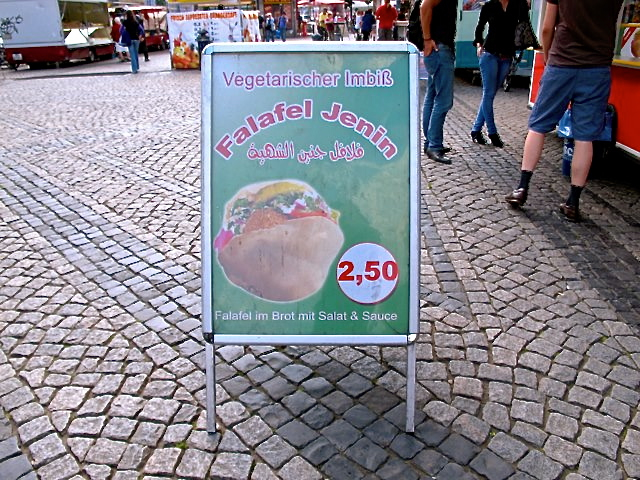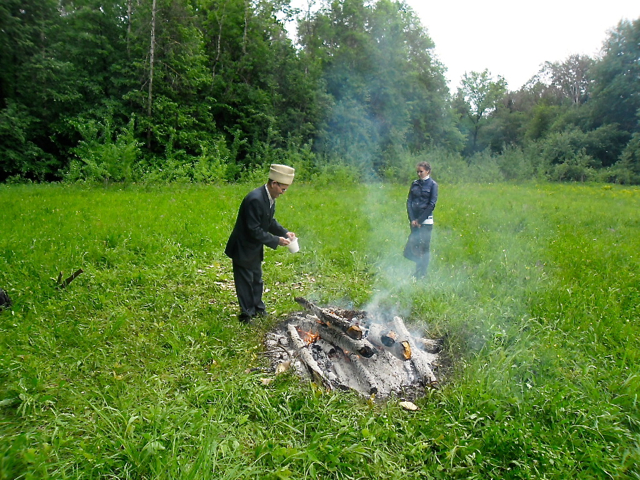Du kap unes! (You’re in touch!) So read the adverts for Armenia’s VivaCell-MTS telephone network, one of the country’s major mobile providers. Telecommunications in the south Caucasus republic are dominated by Russian firms MTS and Beeline, which were joined in 2009 by France’s Orange. All three companies have impressive network ranges, shown in their offices as bright red arteries winding through relief maps, from Vanadzor all the way to Meghri. (More…)
TravelTravel
Travel
The tourist season had long since left Gosh. It packed its souvenirs and memories and returned to Yerevan, squeezed into a vacuum-packed minibus. At least that’s how I got here. Gosh, a village of just over one thousand people, at the end of a small valley in Armenia’s heavily wooded Tavush Province, is known for its twelfth century monastery of Goshavank, burial place of the founder, monastic scholar Mkhitar Gosh. (More…)
A moustachioed face emerged from a bundle of coats and scarves. Levon, talkative as ever, is warming his hands to the festive glow of a slowly rotating Döner kebab at Café Aleppo, Yerevan. Shwarma can take a while to prepare, especially with numb fingers. Business could be better. Customers don’t hang around in the cold weather. (More…)
Nadya Sadoeva owns Dimitrov. Well, the concrete bust of him anyway. The village of the same name, formerly known as Koilasar, lies in Armenia’s Ararat Province, not far from the regional centre of Artashat. I’ve visited this region of Armenia several times over the past few months in my research into the country’s Assyrian community. (More…)
“I’ve driven to Yeraskh more times than I can count,” says Artash, Yerevan veterinarian and part time tour guide. “It always amazes me.” Mount Ararat, on one of those crisp Armenian autumn days, is visible from the city’s centre. Cynics might, and do, see it as Turkey looming over what remains of the Armenian state. (More…)
I’ve been living in Yemen for two weeks now. One of the reasons I have had difficulties adjusting to life here is because I’ve been trying to quit smoking. Few tasks are as hard in the Middle East. (More…)
The Aleppo Kebab Stall is a small, corrugated plastic booth slightly larger than its occupants, and only slightly narrower than the alleyway where it stands, in Yerevan. Barely avoiding the oncoming traffic, I crossed the street and squinted at the shop sign, miming the letters to myself in an attempt to decode the name. Ha-lep. Aleppo. Braving a heady perfume of cigarette smoke and shawarma, I poked my head through the window, and ordered. (More…)
A cathode ray tube was in my way. “What an appropriate start to my day,” I thought, as I pushed it aside, in order to exit the building. My first day back in Berlin, after spending a couple of weeks in Stuttgart, nothing could have better signified my return home. Someone had smashed an old TV set in front of the door overnight. (More…)
“If more people eat here, they’ll be nicer to Jews.” So my father was fond of saying, whenever he’d bring my brother and I to Guys and Dolls, one of London’s first Israeli fast food joints. The hummus was excellent, the shawarma was even better. Thirty years later, London is sprawling with falafel places. (More…)
Food is not what you normally think of while being tear gassed. In fact, it’s kind of the opposite, since the reaction your body has to the gas is to retch. If you had anything in your stomach, watch out because it might not be there anymore. I know I wasn’t thinking about food the last time I was gassed. Well, not any more than usual. (More…)
As a transplant from the San Francisco Bay Area, I spent my first decade in the suburbs of Tucson missing my neighborhood liquor store. It wasn’t just where I’d go to buy a pack of cigarettes, or the newspaper. It was central to the culture of the neighborhood. How could our local Circle K here compare, with its corporate branding, to the color and personality of my old corner shop? (More…)
The Ensai souvenir shop was, it assured passersby, the home of authentic Mari souvenirs. Inside was a jungle of multicoloured fabric, giddying geometric patterns of whites and reds, traditional costumes of the kind usually kept in dusty display cases of the national museum. Yoshkar-Ola, (“the red city,“) is the capital of Russia’s autonomous Republic of Mari El. (More…)
